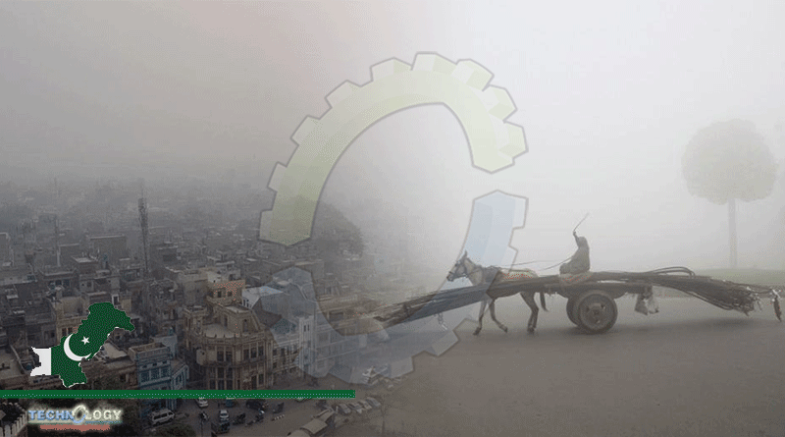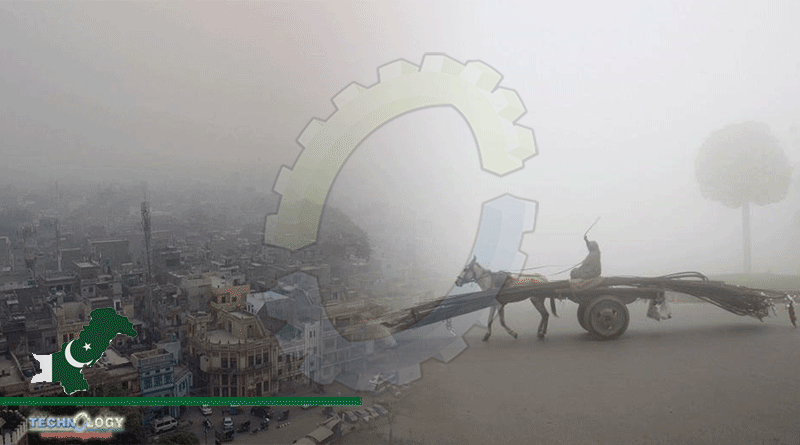The Provincial Disaster Management Authority (PDMA), however, claimed that effective multiple steps were being taken to tackle the smog situation.

The smog phenomenon is likely to further intensify in provincial capital in the next couple of days, taking the air pollution level above 400 on air quality index, which can also cause breathing difficulties.
The Provincial Disaster Management Authority (PDMA), however, claimed that effective multiple steps were being taken to tackle the smog situation.
PDMA Director Nisar Sani told APP here on Tuesday that a state-of-the-art monitoring cell had been set up, which was closely monitoring the situation and taking steps in coordination with the allied departments. The latest technology was being used to monitor anti-smog activities in the province.
He said transport sector was a major factor behind smog, as it was contributing 42 per cent of the total pollution. To control transport related emissions, stringent steps were being taken by the PDMA, along with allied departments, he said adding that fine amounting to Rs 15 million had been imposed on smoke-emitting vehicles in the provincial capital besides issuing around 8,000 challans during the ongoing crackdown.
During the last 24 hours only, he said that 270 smoke-emitting vehicles were impounded whereas 338 industrial units were sealed besides arresting 18 violators. Rs 1.9 million fine was imposed over violations during the said period and 87 FIRs were got registered. Encroachments were causing congestion and slow traffic flow on roads, he said adding that operation was being conducted against encroachments.
Ride sharing concept was being promoted under which single person ride usage would be discourage because when every individual would come on road with a vehicle, it would ultimately increase traffic and more emissions.
He said electric vehicles were future of the country and a vital source to tackle environment related issues. The provincial government was working on it to replace old fuel reliant vehicles with environment friendly electric vehicles.
In the first phase, he said locally manufactured electric rickshaws were being introduced which would help in decreasing air pollution in the city. He said the rickshaws would be cheap and economically low cost than traditional rickshaws as these would be saving fuel consumption.
Availability of spare-parts related to the rickshaws and its maintenance would be ensured. As major portion of passengers in the provincial capital used public transport, he said the government was planning to ply electric buses.
He urged citizens to demonstrate like a responsible member of society and contribute for making the envi-ronment pollution-free.
He said burning of crops residue was also a major source of smog; however, the PDMA was using the latest satellite images through SUPARCO to identify stubble burning spots and prompt action was being taken accordingly with the help of revenue and other departments. FIRs were being lodged on stubble burning by the relevant departments, he added.
He said that massive residue burning exercise was witnessed at Indian side which was also adding smog intensity in Pakistan.
The PDMA official said that water sprinkle activities were also being carried out to minimise dust which was also a source of smog and water sprinkle activities were carried out in 11,259 localities in last three days.
Commenting on brick-kilns closure, he said that all kilns operating on old technology had been closed down until Dec 31 and kilns using the latest zig-zag technology were allowed to operate.
December 31 was also a deadline for old technology brick kilns to convert to new technology, he said adding that the provincial government was also facilitating the brick-kiln owners of getting loans amounting to Rs 1.2 million to convert their kilns to the latest technology.
He said that further rise in smog was expected in coming days; however, the PDMA was vigilant and taking effective measures to minimise its effect. He also urged people to take all precautionary measures to avert health implications of smog.
Originally published at Nation
